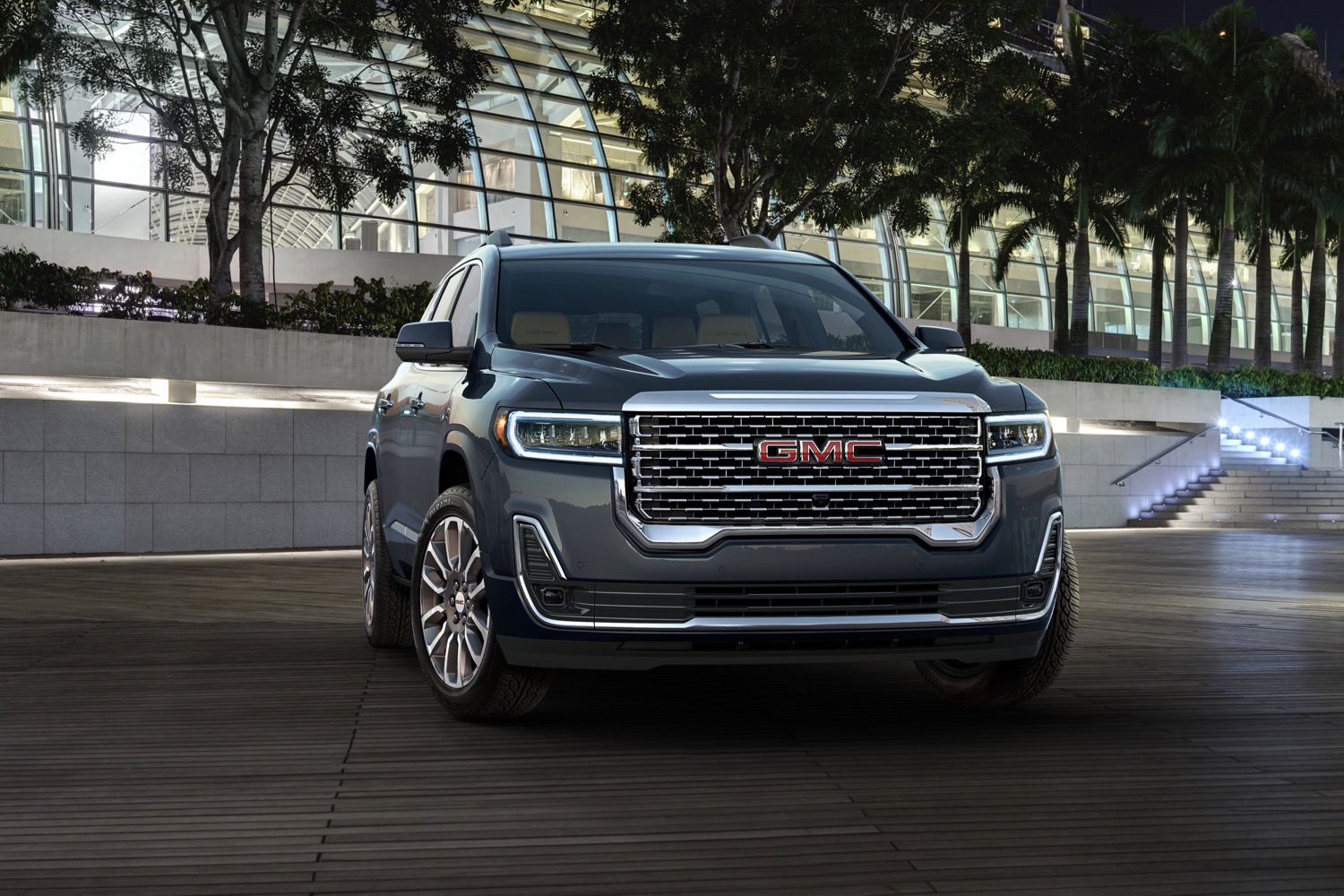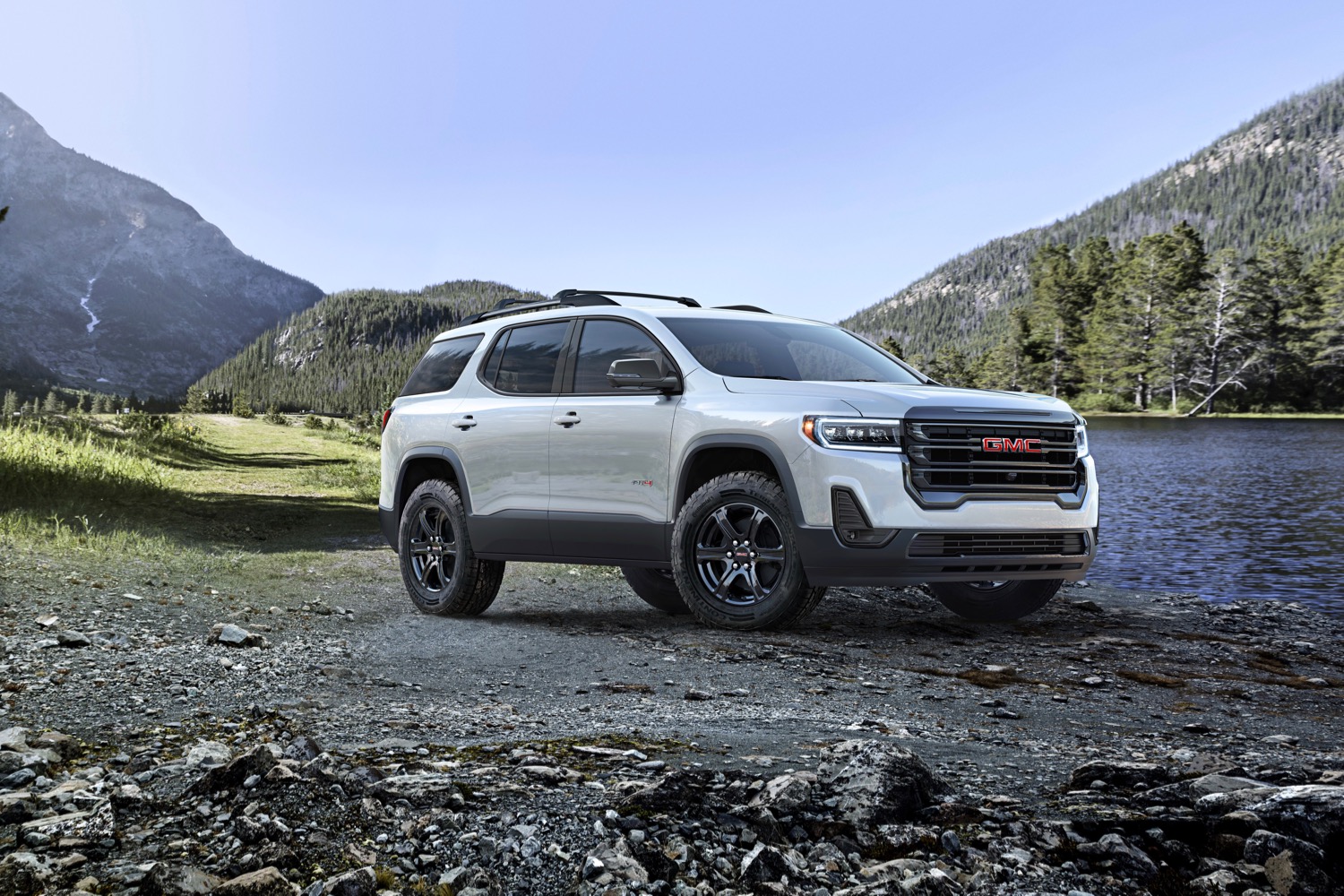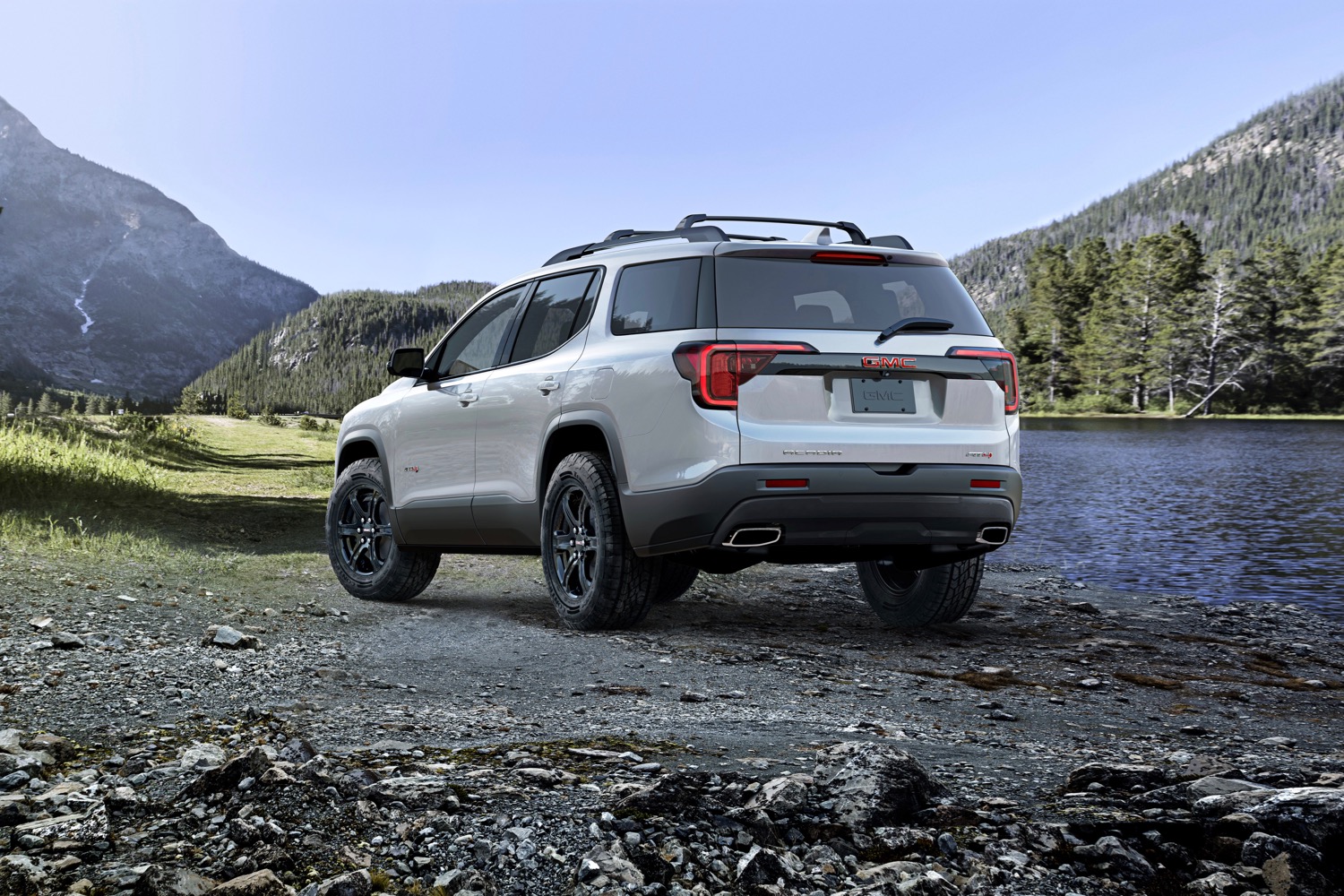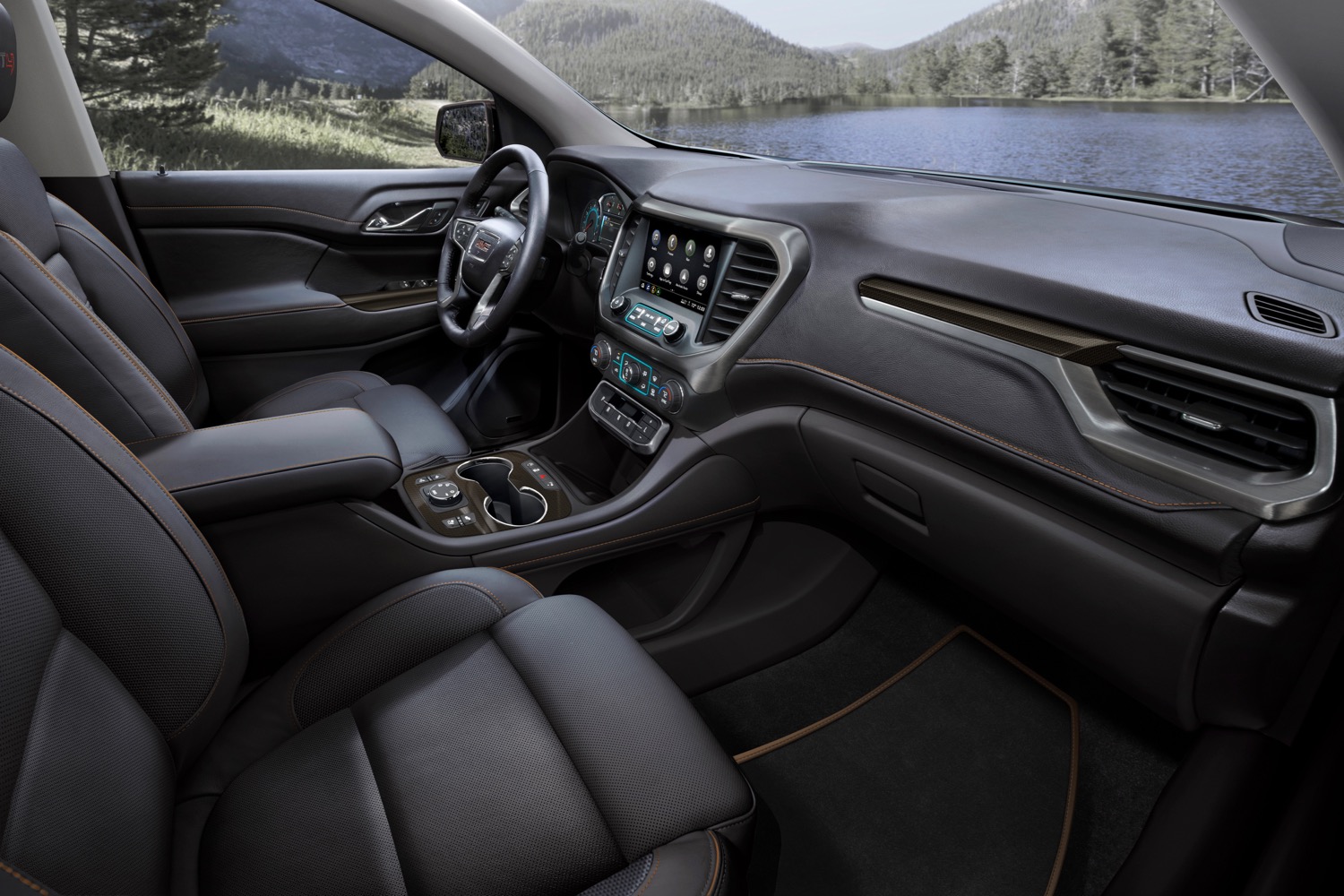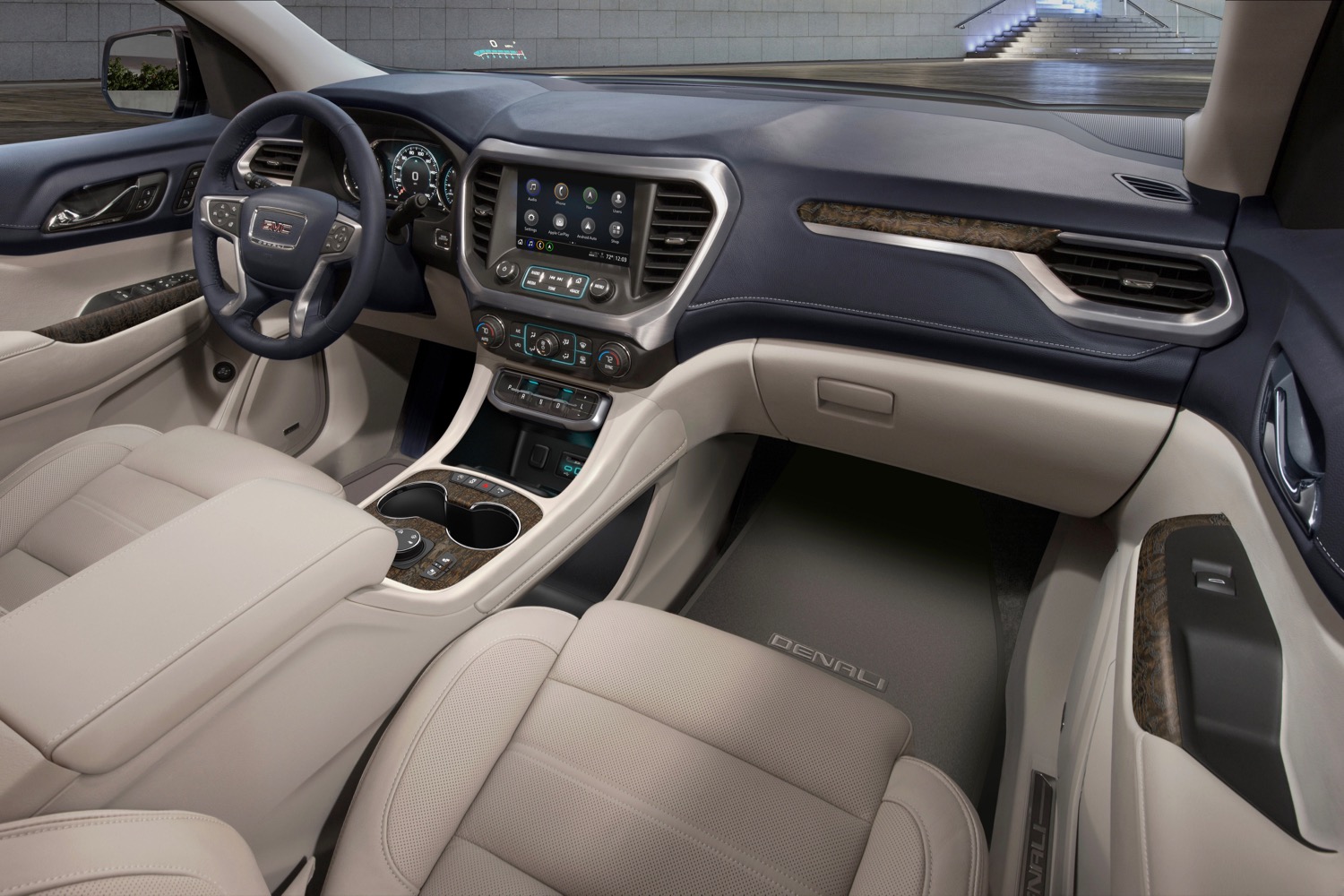The 2020 GMC Acadia crossover gets a significant refresh, including new styling aimed at giving this family hauler a tougher, more truck-like look. But under the skin, it’s all about efficiency and tech.
The Acadia gets a new grille, front and rear fascias, and C-shaped lighting elements similar to the Sierra pickup truck. The restyling eliminates many of the curves present on last year’s model, with the new headlights, in particular, giving the front end a wider, more intimidating look.
GMC also added an AT4 model to the lineup for 2020, alongside the existing SLE, SLT, and Denali trim levels. Introduced on the Sierra, AT4 is supposed to signify vehicles with more off-road capability than a standard GMC. But while the Sierra AT4 does get some mechanical upgrades, the Acadia AT4 seems to be mostly a styling exercise, although it does get all-terrain tires. The main changes for the AT4 are a black chrome-trimmed grille and model-specific 17-inch wheels (20-inch wheels are optional).
Under the hood, the 2020 Acadia gets a 2.0-liter turbocharged engine, similar to the engine already available in its Chevrolet Traverse sibling, as an option. The turbo engine produces 230 horsepower and 258 pound-feet of torque. Gas mileage was likely the aim for adding the smaller engine, although GMC did not discuss any mpg estimates.
A 2.5-liter naturally-aspirated inline-four and 3.6-liter V6 carry over from the 2019 model year. The four-cylinder engine produces 193 hp and 188 lb-ft, while the V6 is rated at 310 hp and 271 lb-ft. For 2020, all engines are mated to a nine-speed automatic transmission, and get an engine start/stop system to increase fuel economy. Front-wheel drive is standard on the Acadia, with all-wheel drive optional.
GMC also updated the infotainment system, which is based around an 8-inch touchscreen. The system now allows drivers to set a personal profile, including settings for things like audio and climate control, and transfer for it to other GM vehicles with compatible infotainment systems. The new system also gets a “one-shot” setup for entering navigation destinations, as well as two USB-C ports. The Acadia already had three USB-A ports.
A wireless phone-charging pad, head-up display, and rearview camera mirror are also available. The latter lets the driver switch between a conventional rearview mirror and feed from a camera, eliminating the blind spots created by vehicle pillars, cargo, or passengers’ heads.
The 2020 GMC Acadia goes on sale this fall. Pricing will be announced closer to the on-sale date.
